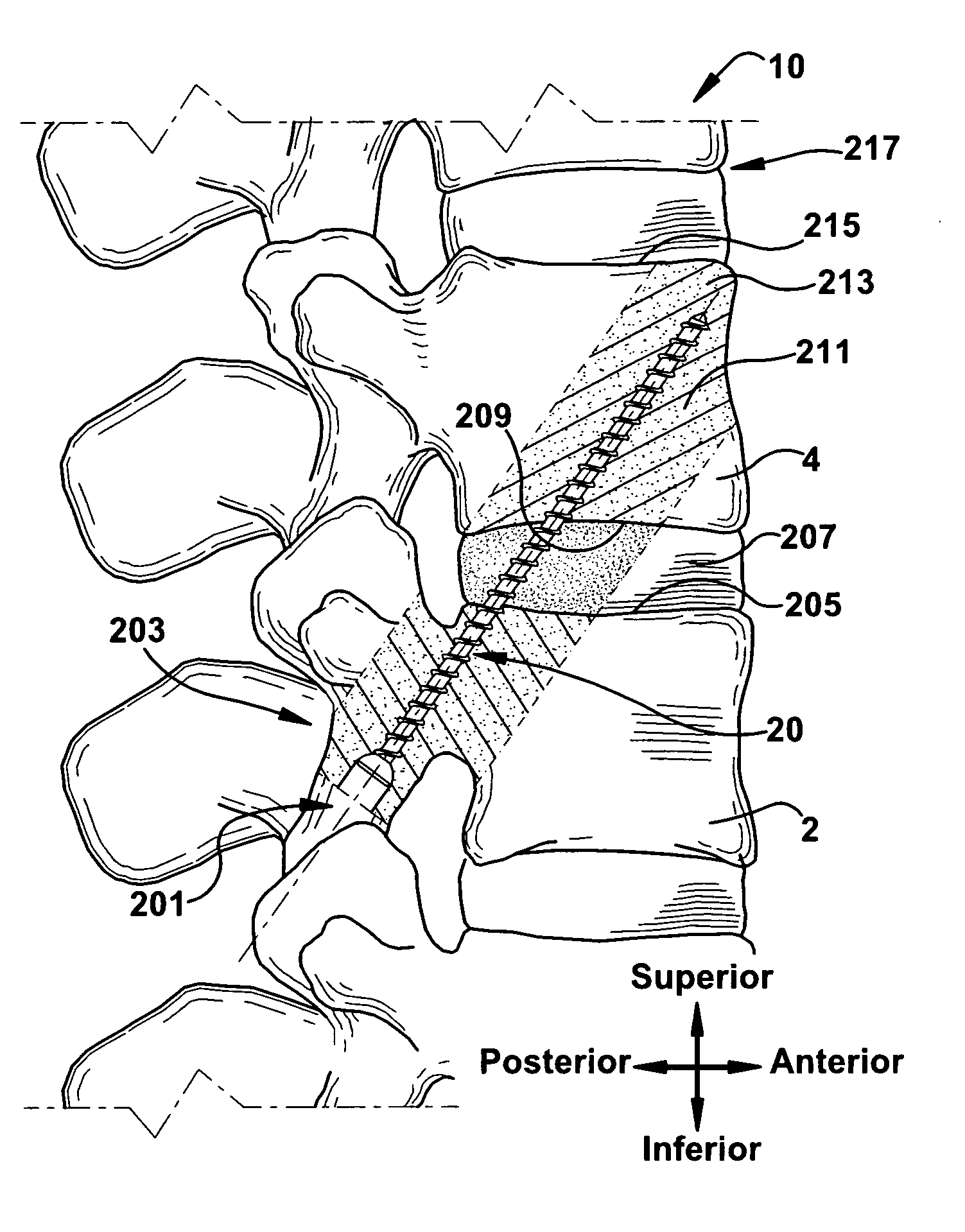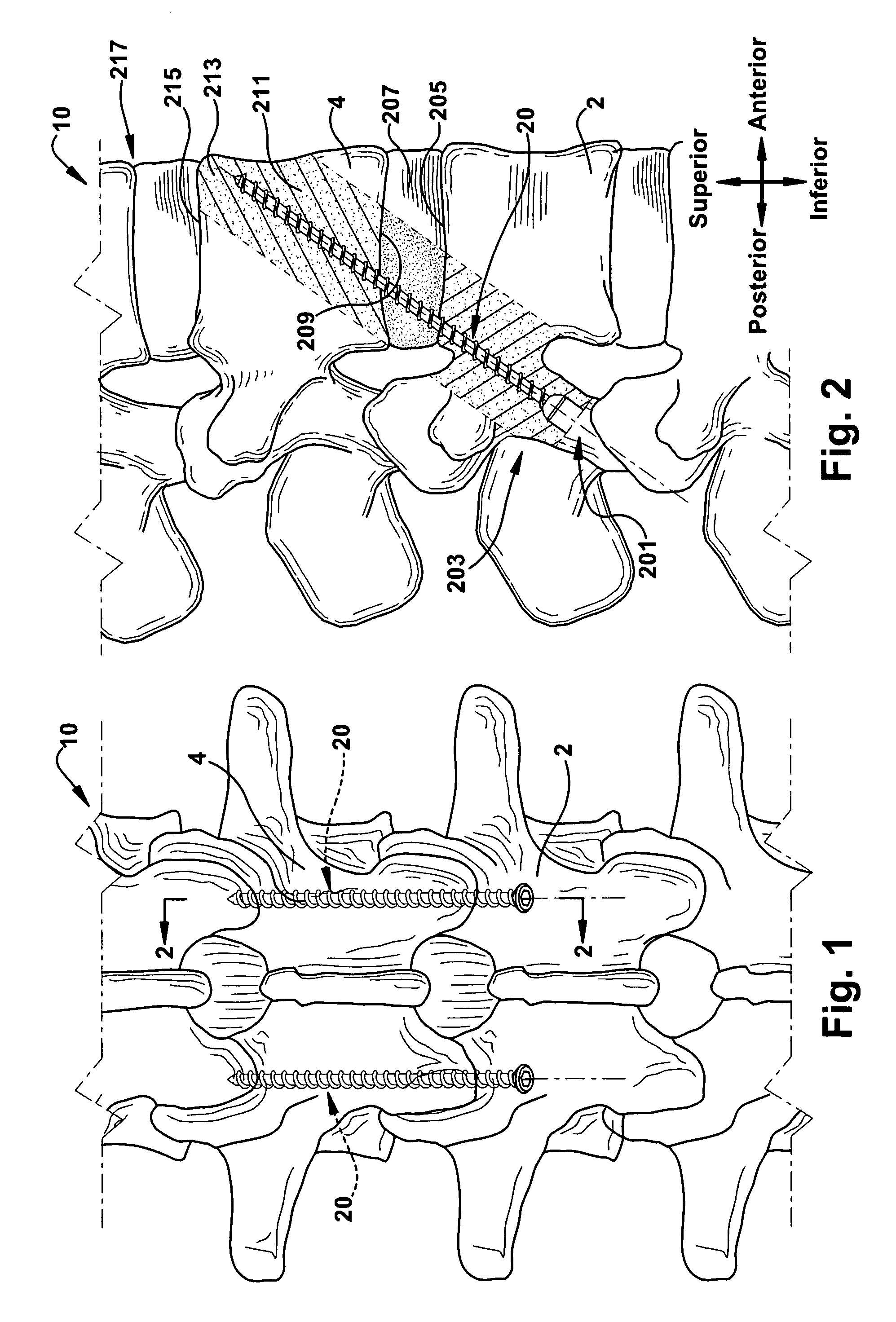Oblique lumbar interbody fusion
a lumbar interbody and lumbar joint technology, applied in the field of minimally invasive methods, can solve the problems of lower back pain, loss of work productivity, and physician's inability to achieve the effect of reducing pain, and reducing pain
- Summary
- Abstract
- Description
- Claims
- Application Information
AI Technical Summary
Benefits of technology
Problems solved by technology
Method used
Image
Examples
Embodiment Construction
[0016]A method 10 in accordance with the present invention defines a minimally invasive and reliable placement of spinal fusion implants between adjacent vertebrae to facilitate rigid fixation. The method 10 is percutaneously applied to interbody vertebral fixation at and above the L5-S1 vertebral segment. The method 10 is applied as an outpatient procedure for vertebral body fixation and will thus cost less than conventional invasive surgical approaches, which requires a minimum of 3-5 days stay in the hospital.
[0017]As shown in FIGS. 1 & 2, the method 10 comprises percutaneous lumbar interbody screw fixation of two partially threaded cancellous screws 20 inserted into adjacent lumbar vertebrae 2, 4 following a diskectomy, also performed with percutaneous tools. The diskectomy is performed through a lateral extraforaminal approach using percutaneous tools. Then, an interbody graft placement and screw insertion is performed. As shown in FIG. 2, the trajectory of the screws 20 is: (i...
PUM
 Login to View More
Login to View More Abstract
Description
Claims
Application Information
 Login to View More
Login to View More - R&D
- Intellectual Property
- Life Sciences
- Materials
- Tech Scout
- Unparalleled Data Quality
- Higher Quality Content
- 60% Fewer Hallucinations
Browse by: Latest US Patents, China's latest patents, Technical Efficacy Thesaurus, Application Domain, Technology Topic, Popular Technical Reports.
© 2025 PatSnap. All rights reserved.Legal|Privacy policy|Modern Slavery Act Transparency Statement|Sitemap|About US| Contact US: help@patsnap.com


